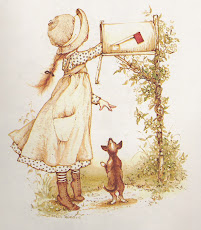To begin my education I decided to start by reading the Cooking Basics found in the front of my Better Homes and Gardens cookbook. Most people probably already know most of the basics like: Measure dry or solid ingredients with Graduated Measuring Cups, and measure liquids with Liquid Measuring cups. Level off dry ingredients with a straight edge, such as the back of a table knife as my grandmother did, and place liquid measurements on a flat surface bending yourself down to eye level to read the right amount. I personally use the shake method for dry ingredients I watched my mother do; fill the cup and shake it back and forth until the excess falls back into the flour bin and your left with a level cup of flour, of coarse it is not always the most precise measurement. Sifting ingredients is not necessary except with cake flour as long as you give it (flour or whatever) a stir before scooping out your measurement. Always pack brown sugar so that it has the form of the cup when you dump it out, unless the recipe directs otherwise, which you may not ever see in your lifetime. Here's a new slice I hadn't known about and actually wondered about before; when measuring dried herbs, fill the measuring spoon until it is level and then if the recipe calls for it, crush it with your other hand or with a mortar and pestle. You should "refrigerate red spices, such as paprika, to preserve their flavor and color." Store other herbs and spices in a cool spot away from sunlight in airtight containers. I once left Cayenne Pepper out on the counter and it got sun bleached, I haven't opened it yet to see if the flavor was effected.
The next section was on kitchen appliances and equipment, beginning with knives. Julia Child said "Yes, you've got to have good knives that will sharpen and that can cut. You should be able to do all the dog work very fast. You need a great big chef's knife, a medium one, and a paring knife. You could get along with three. I have dozens because I'm a knife freak. " Better Homes and Gardens suggest making sure you have: a bread knife (serrated blade), a Chef's or cook's knife (8 inch wedge shape blade), a paring knife (3-4 inch blade), and a utility knife (6 inch thin blade good for soft foods such as sandwiches fruit and cheese.) I also find a carving knife to be necessary (10 inch blade) if you plan to ever have roast or turkey, and if you plan on cooking fish, a fillet knife will come in handy (7 inch blade), a boning knife is also mentioned (5 inch blade) maybe someday I will find it useful to have if I ever finally get a chance to bone a duck. Keep a wet stone in your kitchen because a dull knife is the most dangerous, and be sure to straighten your blades with a sharpening steel from time to time. BHG says to always clean knives with hot soapy water directly after use to preserve the blade. I also heard that you shouldn't use soap with citrus in it because it will ruin the blade.
On that thought (boning a duck) if you have an interest in cooking you should definitely see the new movie that came out to theaters, Julie & Julia. I especially enjoyed the parts about Julia Child, but the whole movie was cute and a laugh. It gave me extra encouragement to take on this cooking education project and to cook MY way through some of my own cookbooks! Not to mention the Julia Child cookbooks I am so impatiently awaiting the arrival of!
Next comes thermometers and I didn't realize it was so important to double check with a thermometer that your oven, refrigerator and freezer are at the right temperatures! I will have to buy some for the oven, refrigerator and freezer now, I suppose. Your refrigerator should never be above 40 degrees Fahrenheit, and your freezer should be zero or below for food safety. Food Safety is VERY IMPORTANT! So remember to check your temperatures. Happy Cooking! I'll be back with more about pots and pans later!
Saturday, August 22, 2009
Subscribe to:
Post Comments (Atom)



No comments:
Post a Comment